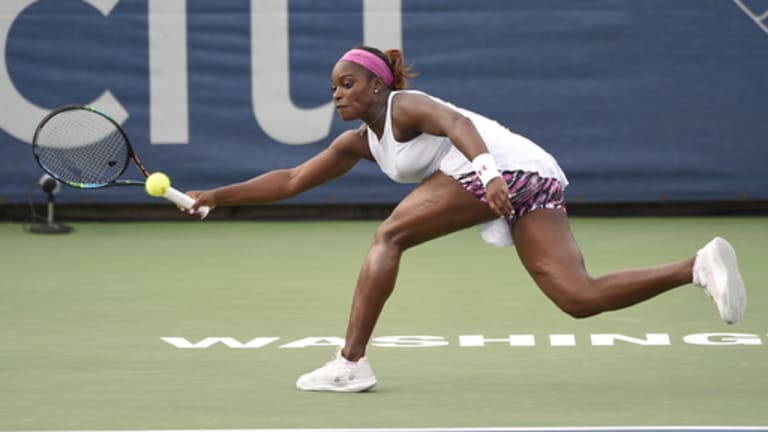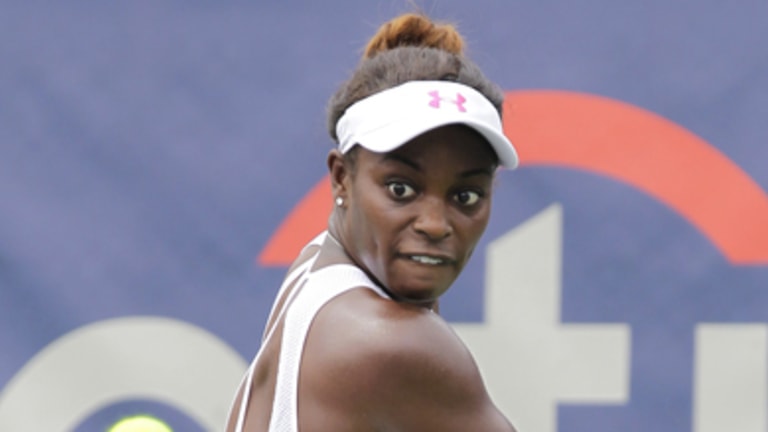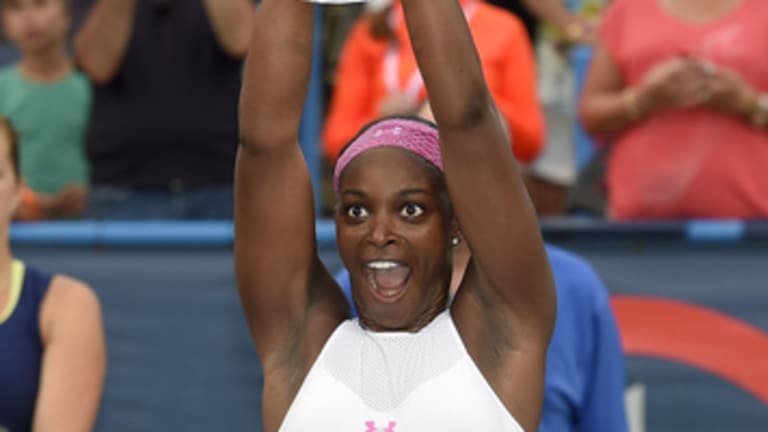“All the best,” Nick Saviano said to Sloane Stephens as he turned and walked away from her. It was a little odd, as far as sign-offs go; Saviano, Stephens’ coach, sounded like he had just finished writing her a long letter, when in reality he had just wrapped up a two-minute coaching visit. But in another sense his words were entirely appropriate. Stephens, in a way that she had never done before, was bringing all of her best to her first WTA final.
It wasn’t so much that Sloane was in the process of beating Anastasia Pavlyuchenkova, a player ranked within five spots of her, by the lopsided score of 6-1, 6-2. It wasn’t that she had shown no signs of nerves or fear during one of the biggest matches of her career. What was most impressive was how complete Sloane’s game was on this day, and how controlled and collected she was in implementing it.
“Sloane Stephens has all the answers!” Tennis Channel commentator Steve Weissmann crowed, a little incredulously, as she anticipated a short volley, raced forward to track it down, and delicately bunted the ball up the line for a winning pass.



